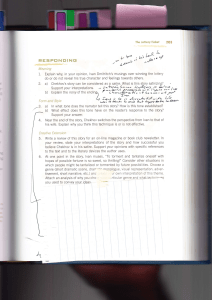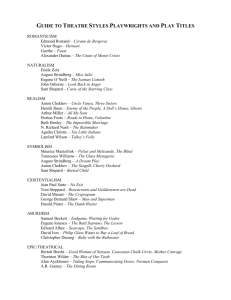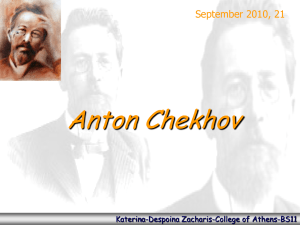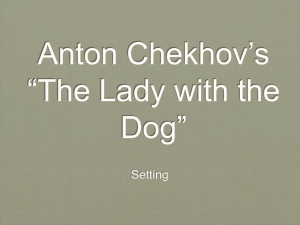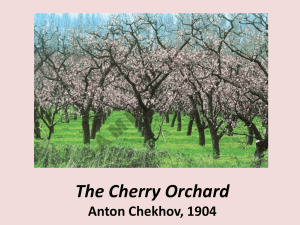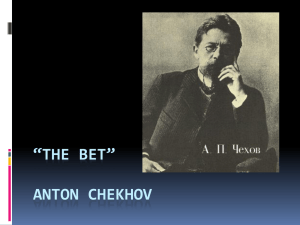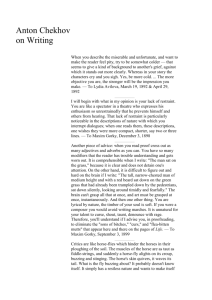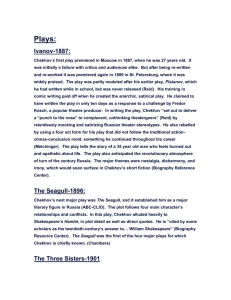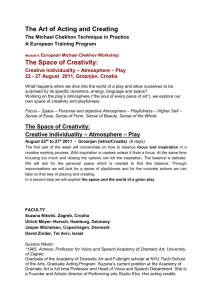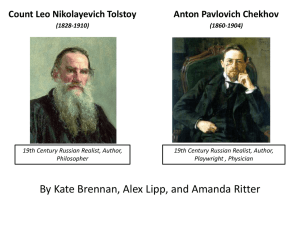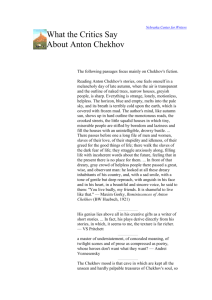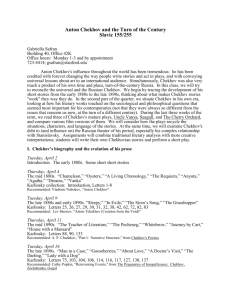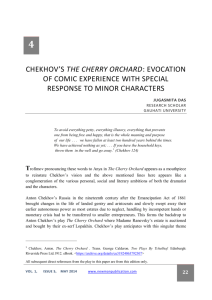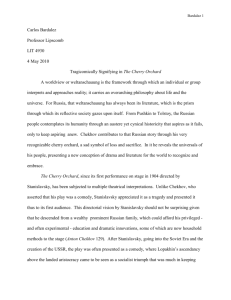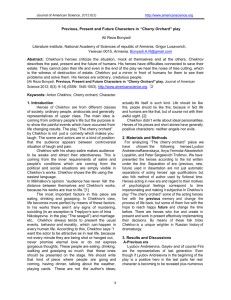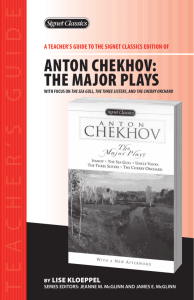"The Lady With the Dog"
advertisement
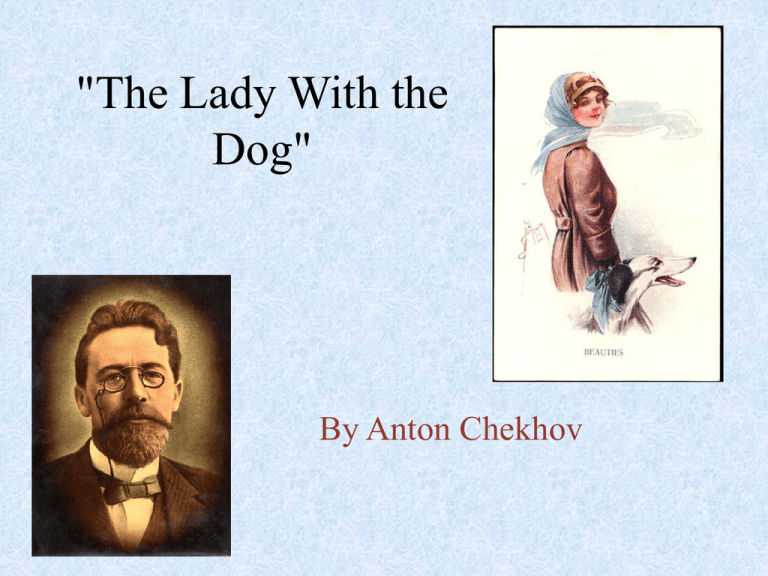
"The Lady With the Dog" By Anton Chekhov Anton Chekhov A century has passed since he died, yet he remains close to us--his stories never out of print, his plays often in production and frequently quarried for movie scripts (two films of the play Uncle Vanya alone in the last decade), and his sensibility in the air around us at every moment. He's the supreme modernist in drama and fiction, omnipresent like no other writer. Taken from "Surprised by Love: Chekhove and "The Lady with the Dog." Those who knew Chekhov did not guess that their doctor friend was to be the father of both the modern theatre and the modern short story, but they knew they were dealing with someone exceptional. When Maxim Gorky read Chekhov's "The Lady with the Dog" in the December 1899 issue of the journal Russian Thought, he wrote to the author: "You are doing a great thing with your stories, arousing in people a feeling of disgust with their sleepy, half-dead existence ..." (Qtd. in “Surprised. . .”). • Gorky's words suggest how variously Chekhov can be read. No one today makes a point of expressing disgust at the people depicted in "The Lady with the Gorky was a founder of the Socialist Realism Dog." literary method and a political activist • On the contrary, we are more likely to notice Chekhov's greatheartedness and the generous treatment of his characters. • For Gorky, however, it was natural to consider them symbols of decadent old. . . • . . .Russia and to see Chekhov as a potential supporter of the new politics. Gorky's name, which he chose, means "The Bitter." • He was on his way to becoming the founder of Soviet socialist realism, driving Russian literature down a blind alley. • Chekhov, on the other hand, was striding onto the bright plains of modernity, shaping a literature without limits. Some Thoughts • “The Lady with the Dog” is perhaps Chekhov's best known and certainly one of his best-loved stories. • It exemplifies the author's subtle yet powerful style, as Chekhov is economical with language and never says more than he needs. • The author writes as though he is painting a canvas, producing a work that is “grand in scope” yet “intimate in feel.” • The author uses colors to convey both the changing spirits and feelings of the characters, as they veer from the grandly impressive to the muted and prosaic. • For example, the aging Dmitri's hair is described as graying, and he often wears gray suits, whereas the sea at Yalta is suffused with color as "the water was of a soft warm lilac hue, and there was a golden streak from the moon upon it." Images of Yalta Yalta is a resort city in Crimea, southern Ukraine, on the north coast of the Black Sea. The Awakening Conscience William Holman Hunt 1851-53 Sites Cited • “The Lady with the Dog” Wikipedia. 6 Apirl 2010 http://en.wikipedia.org/wiki/The_Lady_with_the_Dog • “SparkNote on Chekhov Stories.” SparkNotes.com. SparkNotes LLC. n.d.. Web. 15 Mar. 2010. http://www.sparknotes.com/lit/chekhov/section1.html • "Surprised by love: Chekhov and `The Lady with the Dog.'" Queen's Quarterly. 22-SEP-04 http://goliath.ecnext.com/coms2/gi_01993537052/Surprised-by-love-Chekhov-and.html
